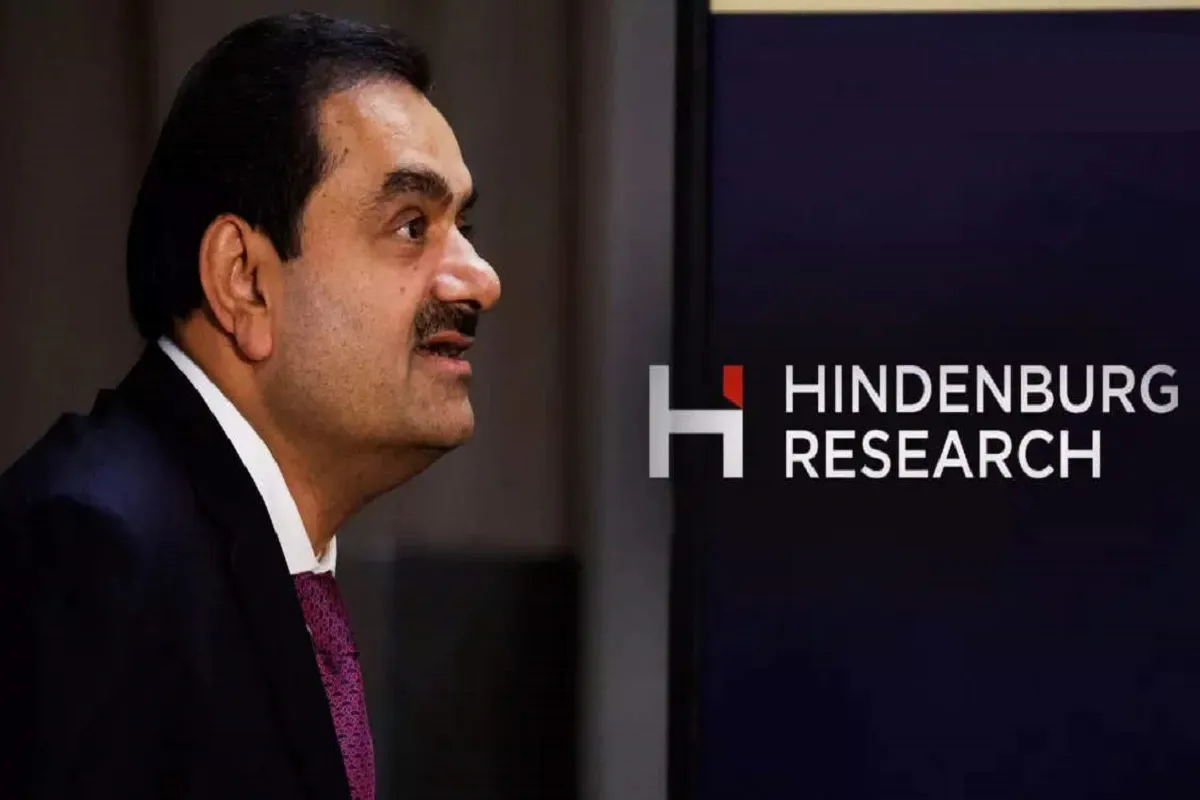
If one reads the Supreme Committee Report carefully, it becomes clear that the report not only gives Adani Group a clean chit, it also indicts SEBI on two counts: carrying out fishing and legally untenable inquiries against FPIs invested in Adani stocks, persisting with a futile and destination less “opaque structure” probe against these FPI, and applying perspective rules with retrospective effect on some of the Adani related transactions.
Let me explain. The Hindenburg Report made three major charges against the Adani Group:
- Round-tripping of funds via Foreign Investors into Group Companies
- Breach of Related Party Transaction Rules
- Manipulation of Adani Group company stock prices
Rahul Gandhi, Congress, and other opposition leaders used the Hindenburg Report to put the Modi government on the mat. Their argument was straightforward: the Modi government was protecting the Adani Group. An independent probe will expose the unholy alliance between Modi and Gautam Adani.
The matter reached India’s Supreme Court. The Court moved quickly to form an Expert Committee comprised of persons of flawless integrity and extensive competence in financial, business, and regulatory areas. The Committee carried out an extensive but time-bound investigation and this is what they have found:
- Ultimate Ownership and Opaque Structure: SEBI is conducting a legally untenable fishing inquiry into the FPIs invested in Adani Stocks
12 foreign portfolio investors, in short, FPIs, and one overseas entity, have made complete declarations of the beneficial owner by identifying the natural persons controlling their decisions for purposes of the Prevention of Money Laundering Act.
In 2018, the provision dealing with “opaque structure” and requiring an FPI to disclose every ultimate natural person at the end of the chain of every owner, was deleted.
The amended FPI Regulations, 2014 provided that the term “ultimate beneficial owner” would mean the “beneficial owner” for purposes of the PMLA, with effect from December 31, 2018. By this amendment, it became abundantly clear that when the FPI Regulations, 2014 require identification of the “ultimate beneficial owner” it meant identification of the”beneficial owner” as stipulated in Rule 9 of the PMLA Rules.
In terms of the PMLA Rules, the determination of such ultimate owner, controller, or person on whose behalf investments are made by the entity in question, is to be determined for any owner of such entity in question, holding 25% or more of such entity. The 25% ownership threshold to identify the ultimate beneficial owner under the anti-money laundering law was lowered by SEBI in its application to FPIs to a 10% ownership threshold.
On August 21, 2019, SEBI decided to delete the regulatory stipulation dealing with “opaque structure” altogether. The deletion was made, accepting a slew of recommendations made by an expert Working Group appointed by SEBI in a report dated May 24, 2019. The Working Group had recommended: “There is no need for separate definition of “opaque structure”. The “opaque structure” clause may therefore be removed from FPI Regulations.”
The thinking behind the 2019 deletion of “opaque structure” was that if every FPI was required to provide information about beneficial owners in respect of owners holding more than 10% of the FPI, there was no need to have a massive requirement to know the ultimate beneficial owner of every single owner of the FPI.
Still, the SEBI kept hounding the 12 FPIs and one overseas entity. SEBI has been demanding to know the ultimate economic ownership of these 13 overseas entities.
This shows how the legislative policy and investigation against Adani have moved in two opposite directions. The 12 FPIs and one other overseas entity are being asked to disclose and prove ownership which is contrary to the law.
The material on the record submitted by SEBI points to the controlling shareholders of the FPIs and the promoters of the Adani Group respectively, asserting that they are independent of each other. The Adani Group has affirmed on oath that no funds have been provided directly or indirectly by them to the FPIs to make investments in the listed Adani stocks. Likewise, it has been stated that the shareholders in control of the FPIs have similarly asserted an absence of connection with Adani and any funding by Adani.
The Committee has called this roving exercise by the SEBI, which is contrary to the laws and regulations, “a journey without a destination.”
The CBDT and ED have likewise denied participating in any such fishing expedition at the request of SEBI. CBDT told the Committee that “Generic requests to foreign jurisdictions are not feasible since this leads to negative comments in the peer review by global agencies and it would impact India’s reputation and such requests are not appreciated.”
ED told the Committee that “ED is not empowered to invoke the provisions of the PMLA without prior registration of an offense falling within the scope of scheduled offenses in the PMLA. SEBI had not filed any case under the scheduled offenses listed in the PMLA.”
As far as seeking more information pertaining to FPIs invested in Adani stocks is concerned the SEBI has drawn a blank from regulators in the Cayman Islands, Malta, Curaçao, the British Virgin Islands and Bermuda. SEBI has failed to provide a rationale for why such information is required.
In short, the securities market regulator suspects wrongdoing but also finds compliance with various stipulations in attendant regulations.
The Committee finds that the SEBI has failed to even make a prima facie case against Adani. “The presentation of a “prima facie” case is the responsibility of the plaintiff or the prosecutor. Once a prima facie case is made out, the burden shifts to the accused,” says the Committee.
The Committee concluded that at this stage, the factual matrix appears to place the matter in the realm of “not proved” – the regulator has not been able to prove that its suspicion can be translated into a firm case of prosecuting an allegation of violation.”
2. Related Party Transactions: Legally wrong to apply prospective standards to attack past transactions
The Hindenburg Report referred to over 6,000 related party transactions and questioned their appropriateness. Additionally, twelve transactions were assailed as related party transactions that have not been disclosed but allegedly ought to have been disclosed.
As far as the appropriateness of charge was concerned, the Committee just dismissed it with a single paragraph that “questioning their appropriateness by the market could be based on an opinion of business judgment but cannot be based on alleged violation of the law. Put differently, if a listed entity is compliant with the law, the scope for discussing a violation of the law stands eroded.”
In other words, what is appropriate for one person, may seem inappropriate to another. The real question is therefore, was there a violation of the law? On that moot point, the Committee concluded that there was no violation of the law.
Coming to the second charge, which was of non-disclosure of related party transactions, the Committee examined the applicable law in minute detail. The terms “related party” and “related party transaction” were amended by SEBI substantially in November 2021 and with a deferred prospective effect – with some changes taking effect on April 1, 2022, and others on April 1, 2023.
In these amendments, the definition of “related party” was amended to include persons holding 20% or more in the listed company whether directly or indirectly or on a beneficial interest basis under Section 89 of the Companies Act, 2013 within the ambit of the term.
With effect from April 1, 2023, the deemed inclusion would bring within the scope of the term “related party” persons who so hold 10% or more of the listed company.
The Committee noted that “the approach adopted by SEBI has been to explicitly stipulate with a deferred prospective effect from April 1, 2022, that transactions involving a subsidiary of a listed company would be deemed to be a transaction with the listed entity. Likewise, SEBI has explicitly stipulated with effect from April 1, 2023 that transactions with an unrelated third party would be regarded as a transaction with a related party, if the purpose and intent of the transaction is to benefit related party. The provision of a deferred prospective effect has enabled listed entities to rearrange theiraffairs in a manner that is not violative of the law. Such a “glide path” is a matter of good practice in economic legislation, where disruptive changes do not hurt the ease of appreciating what is expected of members of society, to be compliant and to ensure compliance.”
If past transactions were compliant with the law as was applicable when they were transacted, and more so, if changes have been made subsequently to outlaw repetition of such past transactions, it would follow that there can neither be a repetition of the same structures nor can there be an attack on the validity of the past transactions, says the report.
The Committee says that the allegation of non-disclosure is not sustainable since by the application of the legal definition of “related party” none of the counter-parties were related parties in the eyes of the law at the time of the transactions. SEBI’s pursuit of investigations is based on the premise that it is pursuing the “spirit of the law”, which flies in the teeth of the prospective amendments with deferred effect that SEBI has made on the legislative side.
3. No evidence of stock manipulation
The Committee concluded that no pattern of artificial trading or “wash trades” among the same parties was found multiple times. In one of the patches where the price rose, the FPIs under investigation were net sellers. One investing entity that had purchased across the patches had purchased far more of other securities. In a nutshell, there was no coherent pattern of abusive trading that has come to light.
SEBI has also found that some entities have taken short positions prior to the publication of the Hindenburg Report and have profited from squaring off their positions after the price crashed upon publication of the report. In other words if there was any manipulation, it was by the short-sellers and not by Adani related entity.
To summarise, the SEBI’s true mission moving forward would be to examine the short-sellers who profited from the Adani stock drop and to uncover the main conspiracy behind the who episode.


















